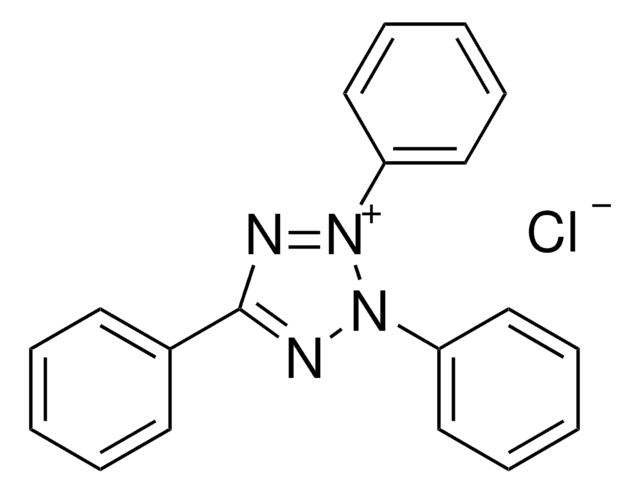59349
Ampicillin
analytical standard
Synonym(s):
D-(−)-α-Aminobenzylpenicillin
About This Item
Recommended Products
grade
analytical standard
Quality Level
Assay
≥95.0% anhydrous basis (NT)
shelf life
limited shelf life, expiry date on the label
technique(s)
HPLC: suitable
gas chromatography (GC): suitable
impurities
≤20% water
mp
208 °C (dec.) (lit.)
application(s)
clinical testing
format
neat
storage temp.
2-8°C
SMILES string
[H][C@]12SC(C)(C)[C@@H](N1C(=O)[C@H]2NC(=O)[C@H](N)c3ccccc3)C(O)=O
InChI
1S/C16H19N3O4S/c1-16(2)11(15(22)23)19-13(21)10(14(19)24-16)18-12(20)9(17)8-6-4-3-5-7-8/h3-7,9-11,14H,17H2,1-2H3,(H,18,20)(H,22,23)/t9-,10-,11+,14-/m1/s1
InChI key
AVKUERGKIZMTKX-NJBDSQKTSA-N
Looking for similar products? Visit Product Comparison Guide
General description
Ampicillin belongs to the β-lactum group of antibiotics. It is used to treat bacterial infections via penetrating gram positive and gram negative bacteria. Its mode of action basically involves the inhibition of bacterial cell wall synthesis, thus leading to cell lysis.
Application
Biochem/physiol Actions
Mode of Resistance: Administration with ß-lactamase cleaves the ß-lactam ring of Ampicillin and inactivates it.
Antimicrobial Spectrum: Effective against both Gram-positive (similar to benzylpenicillin) and Gram-negative bacteria (similar to tetracyclines and chloramphenicol.
Packaging
Caution
Preparation Note
Signal Word
Danger
Hazard Statements
Precautionary Statements
Hazard Classifications
Resp. Sens. 1 - Skin Sens. 1
Storage Class Code
11 - Combustible Solids
WGK
WGK 2
Flash Point(F)
Not applicable
Flash Point(C)
Not applicable
Choose from one of the most recent versions:
Already Own This Product?
Find documentation for the products that you have recently purchased in the Document Library.
Customers Also Viewed
Our team of scientists has experience in all areas of research including Life Science, Material Science, Chemical Synthesis, Chromatography, Analytical and many others.
Contact Technical Service






